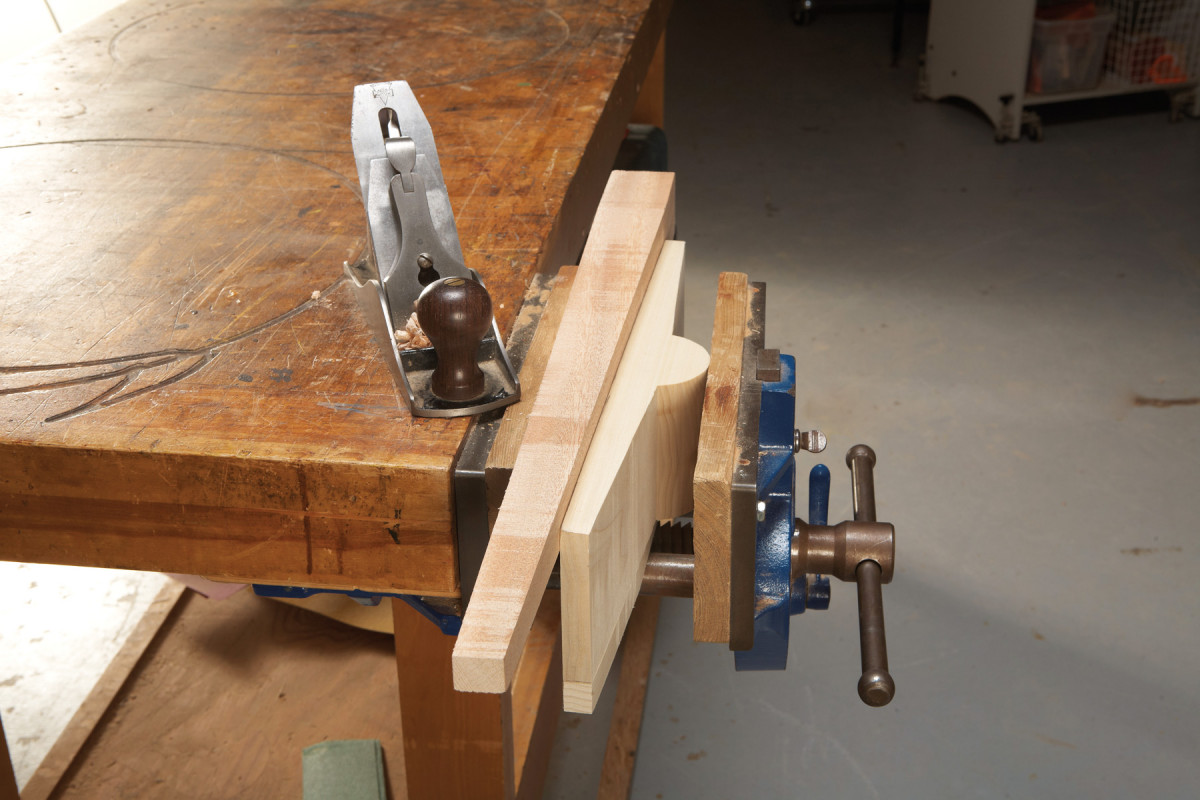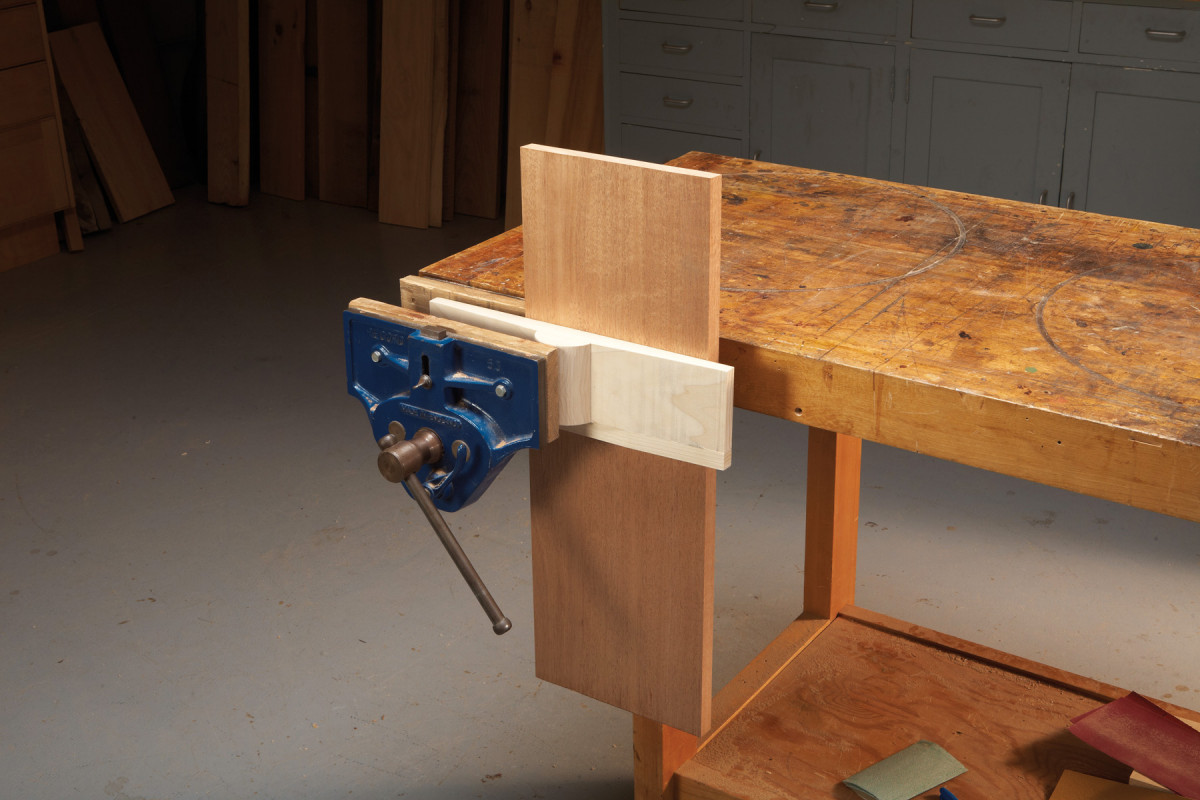We may receive a commission when you use our affiliate links. However, this does not impact our recommendations.

Shop-Made Rocker Jaw
One simple board, cut into the shape of a seesaw, can make a huge improvement to your vise. It allows you to firmly hold tapered work and long, upright boards off to the side of the vise.
For a tapered piece, such as the leg shown here, place the rocker in the middle of the vise. The rocker will automatically rotate to match the leg’s taper as you tighten the vise.
 For a long board, move the rocker to the end of the vise. As you tighten the vise, the front jaw will twist a bit—an unavoidable condition known as “racking.” The rocker compensates for racking and applies even pressure across the front face of the board. Without the rocker, you know what happens: As the vise racks, it only pinches the left edge of the board, and the board is free to rotate. Not good. The rocker neatly solves this age-old problem.
For a long board, move the rocker to the end of the vise. As you tighten the vise, the front jaw will twist a bit—an unavoidable condition known as “racking.” The rocker compensates for racking and applies even pressure across the front face of the board. Without the rocker, you know what happens: As the vise racks, it only pinches the left edge of the board, and the board is free to rotate. Not good. The rocker neatly solves this age-old problem.
To make the rocker, you’ll need a board that’s about 1-3/4″ thick, as wide as your vise is deep and a little longer than your vise’s jaws. I made the curved portion 2-3/4″ dia., but there are no critical dimensions. Just draw the shape on the board’s edge and cut it out on a bandsaw.
Here are some supplies and tools we find essential in our everyday work around the shop. We may receive a commission from sales referred by our links; however, we have carefully selected these products for their usefulness and quality.









Whenever I see a photo of a plane resting its sole on a bench, I know the ‘craftsman concerned’ really isn’t!
Leaving a plane on it’s sole or side is only a preference of the user.
Many people think to so will dull the blade. This can Only happen it there is any metal on the bench surface. My woodworking bench’s top is completely free of metal.
I prefer to set my planes down on the sole as this allows for easier resumption of the work. I don’t have to twist my wrist to pick it up.
To each his own is all I can say
Not true. Many fine woodworkers like Rob Cosman prefer to place their planes sole down on their benches. A wooden bench top will not damage the steel blade. However, with the plane on its side, dinging it with another steel tool or object is more probable. Also, if the blade is razor sharp, it can do damage to the maker’s skin or other work pieces.